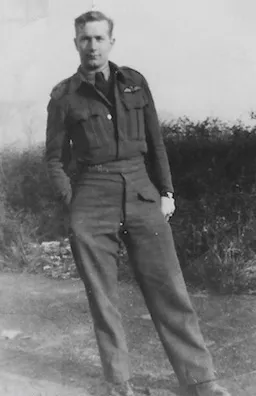McKillop, Robert Hugh (Sergeant)
Killed in Action 1942-December-16


Birth Date: 1917-March-19
Born: Wanganui East, Whanganui District, Manawatū-Whanganui, New Zealand
Parents: Son of Patrick McKillop and Ruby McKillop (nee Hay), of Wanganui, Wellington, New Zealand
Spouse:
Home: Wanganui, Wellington, New Zealand
Enlistment:
Enlistment Date: unkown date
Service
RNZAF
Unit
15 (B) Sqn- Squadron (RAF)
Aim Sure
Base
RAF Bourne
Rank
Sergeant
Position
Bomb Aimer
Service Numbers
404389
Target
Crew or Other Personnel
Stirling R9168
Mission
Stirling Mk. l R9168
Bombing Diepholz Germany 1942-December-15 to 1942-December-16
15 (B) Sqn (RAF) RAF Bourne
#15 Squadron RAF (Aim Sure) RAF Bourne. Stirling I aircraft R9168 LS-T, on an operation to bomb the airfield at Diepholz, Germany, was repeatedly hit by flak before being intercepted by the night fighter crew of Leutnant Werner Rapp & Unteroffizier Hans Ortmann of 7/NJG 1 and shot down. The Stirling crashed into woods East of Gortel near Epe, Netherlands
Pilot Officer Emerson Harvey Kieswetter (RCAF), Pilot Officer Russell Neal Holmes (RCAF) , Pilot Officer Hugh Ernest Hill (RCAF)(USA), Pilot Officer Frank Severne Millen (RCAF)(USA), Sergeant Grantley Charles George Hutton (RAF) and Sergeant Robert Hugh McKillop (RNZAF) were all killed in action
Sergeant James Frederick Perring (RAF) survived and was taken as Prisoner of War
The Last Flight of T for Tommy by Harry BouwmanStirling serial: R9168

In June 1944, this Short S.29 Stirling B Mk. IV (Serial No. LK589), coded V3, RAF, was flown across the Atlantic as part of a navigation training exercise and did a tour of bases in Eastern Canada. It is shown here at Malton, Ontario. It was flown back to the UK after a two-week visit.
The Short Stirling was a British four-engined heavy bomber of the Second World War. It has the distinction of being the first four-engined bomber to be introduced into service with the Royal Air Force (RAF).
The Stirling was designed during the late 1930s by Short Brothers to conform with the requirements laid out in Air Ministry Specification B.12/36. Prior to this, the RAF had been primarily interested in developing increasingly capable twin-engined bombers but had been persuaded to investigate a prospective four-engined bomber as a result of promising foreign developments in the field. Out of the submissions made to the specification Supermarine proposed the Type 317, which was viewed as the favourite, whereas Short's submission, named the S.29, was selected as an alternative. When the preferred Type 317 had to be abandoned, the S.29, which later received the name Stirling, proceeded to production. In early 1941 the Stirling entered squadron service. During its use as a bomber pilots praised the type for its ability to out-turn enemy night fighters and its favourable handling characteristics whereas the altitude ceiling was often a subject of criticism. The Stirling had a relatively brief operational career as a bomber before being relegated to second line duties from late 1943. This was due to the increasing availability of the more capable Handley Page Halifax and Avro Lancaster, which took over the strategic bombing of Germany. Decisions by the Air Ministry on certain performance requirements (most significantly to restrict the wingspan of the aircraft to 100 feet) had played a role in limiting the Stirling's performance; the 100ft limit also affected earlier models of the Halifax (MkI & MkII) though the Lancaster never adhered to it.
During its later service, the Stirling was used for mining German ports; new and converted aircraft also flew as glider tugs and supply aircraft during the Allied invasion of Europe during 1944"“1945. In the aftermath of the Second World War, the type was rapidly withdrawn from RAF service, having been replaced in the transport role by the Avro York, a derivative of the Lancaster that had previously displaced it from the bomber role. A handful of ex-military Stirlings were rebuilt for the civil market. Wikipedia







